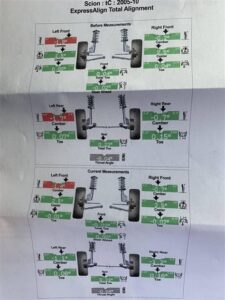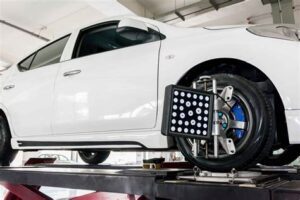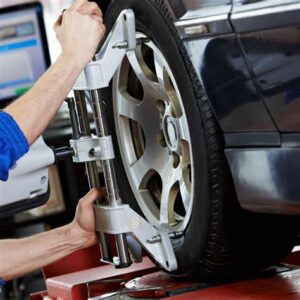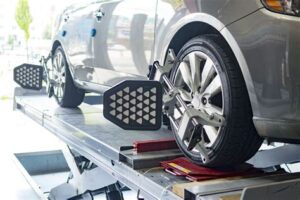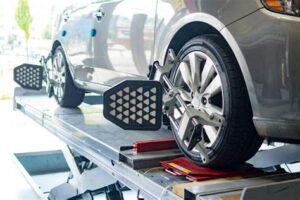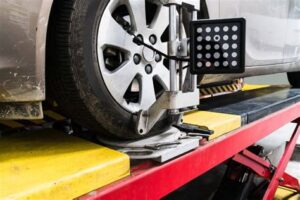Signs Your Car Needs Alignment
Maintaining your vehicle in optimal condition is essential for safety and performance, and one of the key aspects often overlooked is wheel alignment. Proper alignment ensures that your tires wear evenly and keeps your car handling smoothly. If you’ve noticed any changes in your vehicle’s behavior, it might be time to assess its alignment. This article will delve into the importance of car wheel alignment, highlight the key indicators that signal misalignment, and explore how such issues can impact your driving experience. We’ll also outline the steps you should take upon noticing these signs and the benefits of addressing alignment concerns promptly. Keep reading to discover how to keep your vehicle running like new and ensure a safer ride on the road.
Understanding The Importance Of Car Wheel Alignment
Car wheel alignment is crucial for maintaining the optimal performance of your vehicle. It refers to the adjustment of the angles of the wheels to the manufacturer’s specifications. Proper alignment ensures that your car handles smoothly, and it also extends the lifespan of your tires, thereby providing you with better safety and fuel efficiency.
When your vehicle’s wheels are aligned correctly, it promotes even tire wear, enhances driving comfort, and contributes to better fuel economy. In contrast, misalignment can lead to a series of issues, from uneven tire wear to compromised handling capabilities. This makes it essential to recognize the signs your car needs alignment in order to avoid further damage and costly repairs.
| Benefits of Proper Alignment | Consequences of Misalignment |
|---|---|
| Improved tire lifespan | Increased tire replacement costs |
| Better fuel efficiency | Poor gas mileage |
| Smoother handling | Difficulty controlling the vehicle |
| Enhanced safety | Higher risk of accidents |
Regular checks and maintenance of wheel alignment can prevent numerous problems down the road, making it a vital aspect of vehicle care. By staying informed about the signs your car needs alignment, you can ensure a safe and efficient driving experience.
Signs Your Car Needs Alignment: Key Indicators
When it comes to maintaining your vehicle, recognizing the signs your car needs alignment is crucial for ensuring optimal performance and safety. Here are some key indicators to look out for:
| Indicator | Description |
|---|---|
| Uneven Tire Wear | If you notice that your tires are wearing unevenly, it could be a sign of misalignment. Check for wear patterns on the inside, outside, and center of the tires. |
| Vehicle Pulling to One Side | When driving on a straight road, if your car tends to pull to the left or right, this is a common indication that the wheels are misaligned. |
| Steering Wheel Position | If your steering wheel is not centered when driving straight, it may suggest that your wheels are out of alignment. |
| Increased Steering Wheel Vibration | A vibrating steering wheel can be a sign of misalignment or other suspension issues. Pay attention to unusual vibrations while driving. |
| Abnormal Noises | If you hear grinding or squealing noises, it might be linked to wheel misalignment, impacting your car’s overall performance. |
Being aware of these signs your car needs alignment not only enhances your driving experience but also prolongs the life of your tires and other components. Regular checks and maintenance can prevent more significant issues down the line.
How Misalignment Affects Your Vehicle’s Performance
When your car’s wheels are misaligned, it can lead to several performance issues that impact both safety and driving experience. Understanding these effects can help you identify the signs your car needs alignment before they escalate into more significant problems.
- Increased Tire Wear: Misalignment causes uneven tire wear, leading to the need for premature tire replacements.
- Poor Handling: You may experience difficulty steering or getting a straight drive, which can compromise your control over the vehicle.
- Reduced Fuel Efficiency: When the wheels are not properly aligned, your engine has to work harder, resulting in increased fuel consumption.
- Brake System Strain: Misalignment can put additional stress on the brakes, which leads to faster wear and the need for replacements.
- Increased Risk of Accidents: The combined effects of poor handling and increased tire wear can contribute to a higher risk of accidents.
To visually represent how misalignment can affect your vehicle’s dynamics, refer to the following table:
| Impact of Misalignment | Potential Consequences |
|---|---|
| Tire Wear | Uneven tread wear, shorter tire lifespan |
| Handling | Difficulty steering, increased response time |
| Fuel Efficiency | Higher fuel costs, reduced mileage |
| Brake System | Increased wear, potential brake failure |
| Safety | Higher likelihood of accidents and loss of vehicle control |
By paying attention to the signs your car needs alignment, you can prevent these adverse effects and ensure a smooth, safe driving experience.
Steps To Take When You Notice Alignment Signs
If you begin to notice signs your car needs alignment, it’s crucial to take immediate action to ensure your vehicle’s safety and performance. Here are the steps you should follow:
- Identify the Symptoms: Pay attention to any unusual behaviors your vehicle is displaying, such as uneven tire wear, steering wheel vibration, or the car pulling to one side. These could be clear signs your car needs alignment.
- Check Tire Pressure: Ensure that your tires are adequately inflated; low or uneven tire pressure can mimic alignment issues. Inflate tires to the recommended pressure levels before proceeding.
- Inspect Tires: Look for any visible signs of wear on your tires, including bulges, cracks, or uneven tread patterns. This can help you determine if the problems are related to alignment or other tire issues.
- Test Drive: Conduct a short test drive in a safe area. Pay close attention to how your car handles, especially during turns and when driving straight.
- Consult a Professional: If you continue to notice signs your car needs alignment after your assessments, it’s time to consult with a professional mechanic or alignment specialist. They can perform a detailed inspection and provide a diagnosis.
- Schedule an Alignment Service: Once you confirm that an alignment is necessary, schedule an appointment with a reputable service center. Make sure they use the latest alignment technology for the best results.
- Follow-Up: After the alignment service, it’s wise to follow up with periodic checks. Regular maintenance can help prevent future misalignment and extend the lifespan of your tires.
By taking these steps immediately upon noticing any of the signs your car needs alignment, you can prevent further damage and ensure a safer driving experience.
Benefits Of Timely Wheel Alignment For Your Car
Ensuring that your car’s wheels are properly aligned is critical for maintaining overall vehicle health and performance. Here are some key benefits of timely wheel alignment:
- Improved Handling: Proper alignment enhances your vehicle’s responsiveness, making it easier to steer and control.
- Increased Tire Life: Keeping your wheels aligned reduces uneven tire wear, extending the life of your tires.
- Better Fuel Efficiency: Misalignment can increase rolling resistance, causing your engine to work harder and consume more fuel. Aligning your wheels can lead to better mileage.
- Enhanced Safety: A well-aligned vehicle is safer to drive as it reduces the risk of handling issues that could lead to accidents.
- Cost Savings: By preventing premature tire wear and mechanical issues, timely alignment can save you money in the long run on tire replacements and repairs.
Regularly checking for signs your car needs alignment can help you leverage these benefits and keep your vehicle in top shape.
Frequently Asked Questions
What are the common signs that indicate a car needs alignment?
Common signs include uneven tire wear, the vehicle pulling to one side, a crooked steering wheel when driving straight, and vibrating or shaking while driving.
How often should I check my car’s alignment?
It’s recommended to check your car’s alignment every 6,000 miles or if you notice any of the symptoms that suggest misalignment.
Can I drive my car if it needs alignment?
While you can technically drive your car, it’s not advisable as misalignment can cause further damage to your tires and suspension and may lead to unsafe driving conditions.
What causes a car to lose alignment?
Common causes of misalignment include hitting a pothole, driving on rough roads, accidents, or normal wear and tear on suspension components.
How does misalignment affect tire wear?
Misalignment can cause uneven tire wear, leading to a shorter lifespan for your tires and potentially dangerous handling issues.
What is the typical cost to realign a vehicle?
The cost of a wheel alignment generally ranges from $75 to $100, although this can vary depending on your location and the specific auto shop.
Can I check my own car’s alignment?
You can perform some basic checks, like looking for uneven tire wear or steering wheel alignment; however, professional equipment and expertise are needed for an accurate assessment.
